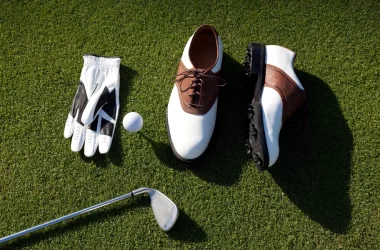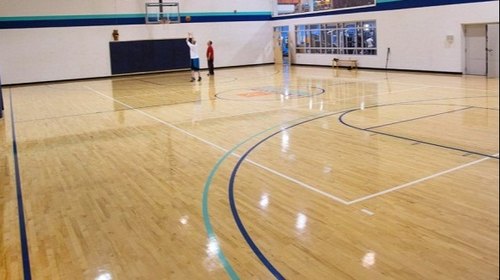Most weather conditions always keep you on your toes and guessing. One minute the sun is out and blinding you so you can’t see your ball, and the next, your ball is getting carried away by strong wind gusts. If you’re someone who is braving the fairway to play the game you love in very windy conditions, this is for you. We’re going to list a few helpful tips you can incorporate into your golf game to improve your score in windy conditions.
1. Assess the Wind Before You Hit the Ball
In windy conditions, it’s extremely common for professional players to look at blades of grass to see which way the wind is blowing. However, it’s also a good idea to watch any trees alongside or on the course, especially the treetops. Doing so will give you an excellent sense of direction of which way your ball will travel when you hit it on top of the normal trajectory. If you don’t have any trees to look at, keep an eye on the flag. If the flag is horizontal, this tells you that there is a strong headwind that will require extra clubs.
2. Make Sure to Balance Yourself
If you don’t have the best balance on a day with no wind, it’ll most likely get a lot worse when the wind is whipping across the course because this wind can magnify any balance issues you have. To help ensure that both of your feet stay firmly on the ground when you swing and follow through, make a point to widen your stance a bit. Doing so will help your balance because it lowers your center of gravity while improving your stability. In turn, this improves your balance during all of your shots.
3. Consider the Crosswind
Sooner or later; you’ll come up on a crosswind to fight as you play. This crosswind can reduce your hitting distance and spin your ball, so you want to know how to work with it. You generally have two options, including:
- Ride with or fight the wind with the ball’s natural flight.
- Deliberately curve the ball so that it travels with the wind. Be aware that this is much more difficult than it sounds on paper.
If the end goal is to land your ball lightly, you want to attempt to fade or curve the ball into the left or right crosswind. On the other end of the spectrum, if you want your ball to travel a much longer distance, you should try to curve your ball in the direction that the crosswind is blowing so that it moves with the wind.
4. Loosen up the Swing
When it’s breezy out, you want to swing your club easily. Resist the natural urge to put more power behind your swing because you’re hitting in the wind because this can throw off your balance and timing. Swinging harder will also increase your swing rate, and this can cause your ball to curve into the wind’s direction or elevate it too much. Contact centeredness and swing speed will determine your ball’s distance, and you should never sacrifice your contact centeredness for speed. Try scaling back your swing to 80% or 85% over the normal 100% you put into it. This will give you a much higher chance of successfully playing in the wind.
5. Reconfigure Your Ball Position
You want to lessen how much impact the stiff breeze has on your ball. To do this, you’ll want to make an effort to hit your ball lower than you normally would. In order to pull this off, you’ll want to play the ball back a lot further in your stance than you would typically would. Start by putting it back roughly an inch from where you normally would. Doing so will allow the ball to stay under the wind better by coming out lower.
6. Be Careful with Club Selection
Picking out the correct club is vital to your game, and it all depends on whether you’re playing out of or into the wind. If you plan to play into the wind, you’ll want to have more clubs than you usually would to help keep your ball lower in the air and reduce how much the wind impacts it. You may need to add one, two, or even three more clubs to your normal lineup. If the wind is behind you, you’ll need fewer clubs. It can be a good idea to remove one to three clubs, depending on how strong the gusts of wind are.
Hopefully you can put these golf tips into practice the next time you’re up against windy conditions. You may not end up with your ideal score in the first nine but check your score again in the back nine and see if you’ve improved.

















